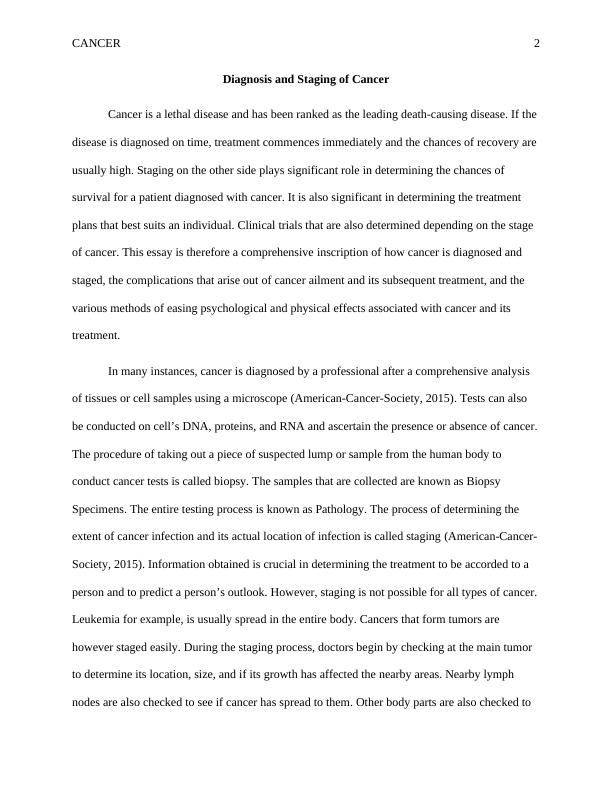Diagnosis and Staging of Cancer
7 Pages1747 Words88 Views
Added on 2023-06-10
About This Document
This essay is a comprehensive inscription of how cancer is diagnosed and staged, the complications that arise out of cancer ailment and its subsequent treatment, and the various methods of easing psychological and physical effects associated with cancer and its treatment.
Diagnosis and Staging of Cancer
Added on 2023-06-10
ShareRelated Documents
End of preview
Want to access all the pages? Upload your documents or become a member.
Cancer: Diagnosis, Staging, Complications, Factors, Nursing Care, and Education
|11
|3070
|69
Diagnosis and Staging of Cancer Report 2022
|11
|2739
|26
The 5 Nursing Process Steps
|13
|3302
|17
Issue of Cancer Research Paper 2022
|9
|2539
|11
(PDF) An Overview of Cancer Treatment Modalities
|9
|2031
|122
Cancer Causes and Symptoms Assignment
|8
|1966
|233



